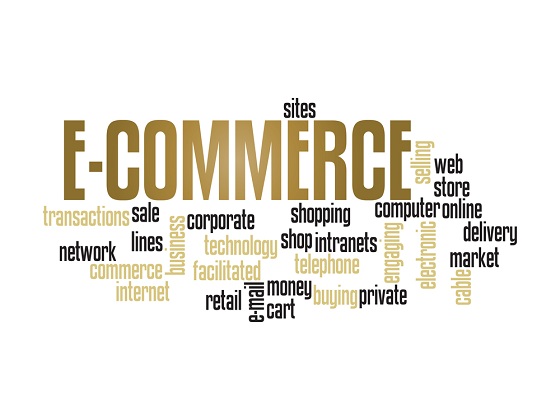Theoretical Paper
- Computer Organization
- Data Structure
- Digital Electronics
- Object Oriented Programming
- Discrete Mathematics
- Graph Theory
- Operating Systems
- Software Engineering
- Computer Graphics
- Database Management System
- Operation Research
- Computer Networking
- Image Processing
- Internet Technologies
- Micro Processor
- E-Commerce & ERP
Practical Paper
Industrial Training
E-Commerce-Overview
E-Commerce or Electronics Commerce is a methodology of modern business which addresses the need of business organizations, vendors and customers to reduce cost and improve the quality of goods and services while increasing the speed of delivery. E-commerce refers to paperless exchange of business information using following ways.
- Electronic Data Exchange (EDI)
- Electronic Mail (e-mail)
- Electronic Bulletin Boards
- Electronic Fund Transfer (EFT)
- Other Network-based technologies

Features
E-Commerce provides following features
Non-Cash Payment − E-Commerce enables use of credit cards, debit cards, smart cards, electronic fund transfer via bank's website and other modes of electronics payment.
24x7 Service availability − E-commerce automates business of enterprises and services provided by them to customers are available anytime, anywhere. Here 24x7 refers to 24 hours of each seven days of a week.
Advertising / Marketing − E-commerce increases the reach of advertising of products and services of businesses. It helps in better marketing management of products / services.
Improved Sales − Using E-Commerce, orders for the products can be generated any time, any where without any human intervention. By this way, dependencies to buy a product reduce at large and sales increases.
Support − E-Commerce provides various ways to provide pre sales and post sales assistance to provide better services to customers.
Inventory Management − Using E-Commerce, inventory management of products becomes automated. Reports get generated instantly when required. Product inventory management becomes very efficient and easy to maintain.
Communication improvement − E-Commerce provides ways for faster, efficient, reliable communication with customers and partners.

Traditional Commerce v/s E-Commerce
| Sr. No. | Traditional Commerce | E-Commerce |
|---|---|---|
| 1 | Heavy dependency on information exchange from person to person. | Information sharing is made easy via electronic communication channels making little dependency on person to person information exchange. |
| 2 | Communication/ transaction are done in synchronous way. Manual intervention is required for each communication or transaction. | Communication or transaction can be done in asynchronous way. Electronics system automatically handles when to pass communication to required person or do the transactions. |
| 3 | It is difficult to establish and maintain standard practices in traditional commerce. | A uniform strategy can be easily established and maintain in e-commerce. |
| 4 | Communications of business depends upon individual skills. | In e-Commerce or Electronic Market, there is no human intervention. |
| 5 | Unavailability of a uniform platform as traditional commerce depends heavily on personal communication. | E-Commerce website provides user a platform where al l information is available at one place. |
| 6 | No uniform platform for information sharing as it depends heavily on personal communication. | E-Commerce provides a universal platform to support commercial / business activities across the globe. |

